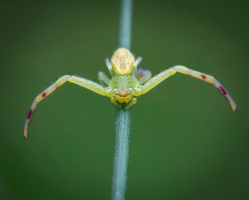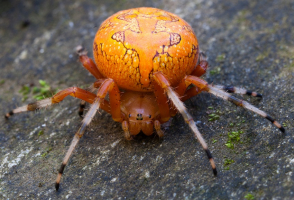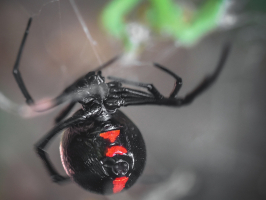Top 10 Most Amazing Types Of Spiders In Indiana
Indiana, known as the “Hoosier State”, is a midwestern state that is part of the Great Lakes Region. It borders Michigan to the north, Ohio to the east, ... read more...Illinois to the west, and Kentucky to the South. This state is well known for its unique and common species of animals. Many kinds of spiders, from the Black-Tailed Red Sheetweaver to the White-Jawed Jumping Spider can be found here. Take a look at this list of Indiana's spider species to find out more!
-
The Black-Tailed Red Sheetweaver (Florinda coccinea), is a member of the sheet weaver family Linyphiidae. It is one of the smallest spiders in Indiana and can be found all over Mexico and the United States. Males are slightly shorter than females in adulthood, measuring 3 to 4 millimeters on average.
With the exception of a small black protrusion at the end of their abdomens, black-tailed red sheet weavers have vivid red bodies. They earn their name because this development resembles a tiny tail. A flat, non-sticky sheet is the foundation of the black-tailed red sheet weaver's web, which is then suspended above by a maze of threads. The threads' function is to ensnare prey and make them fall into the sheet web below by entangling them. Once its prey is captured, the black-tailed red sheet weaver then moves in for the kill.
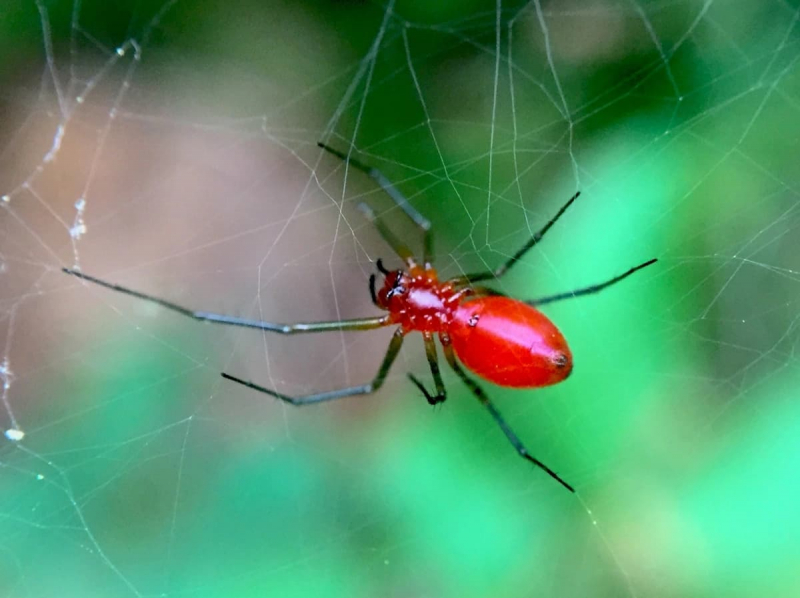
Earthling Nature 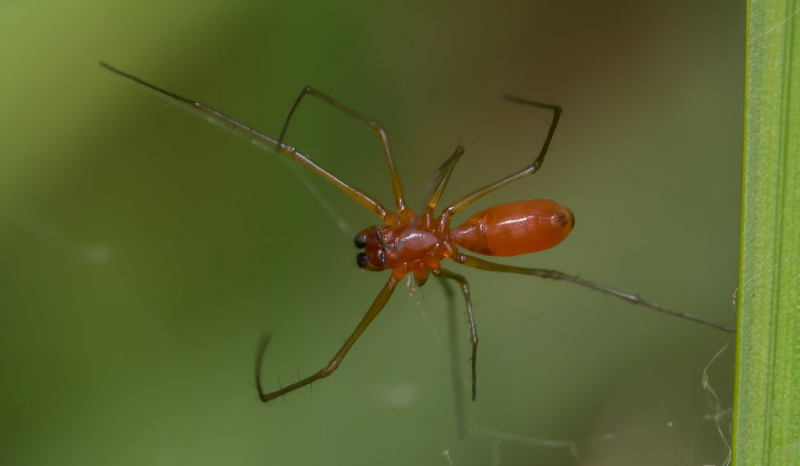
Flickr -
The Long-Bodied Cellar Spider or daddy-long-legs, is one of the most recognizable spiders in Indiana. Although it originated in Asia's subtropical climates, it is now widespread. You're more likely to come across it inside your home because it can't stand chilly weather, especially during the winter.
Males are normally approximately 6 millimeters long and females are about 7 to 8 millimeters long. Their legs might be five or six times longer than their bodies on average. Their name comes from their long, peanut-shaped rear, or opisthosoma. Their opisthosomas have dark markings, and their bodies are normally pale yellowish-brown. Dark, calm locations are preferred by long-bodied cellar spiders. They are known not to be aggressive toward people, despite the fact that they hunt and kill other spiders. Contrary to popular assumption, they can bite people, but they do so infrequently, and their bite does not have any lasting medical effects.
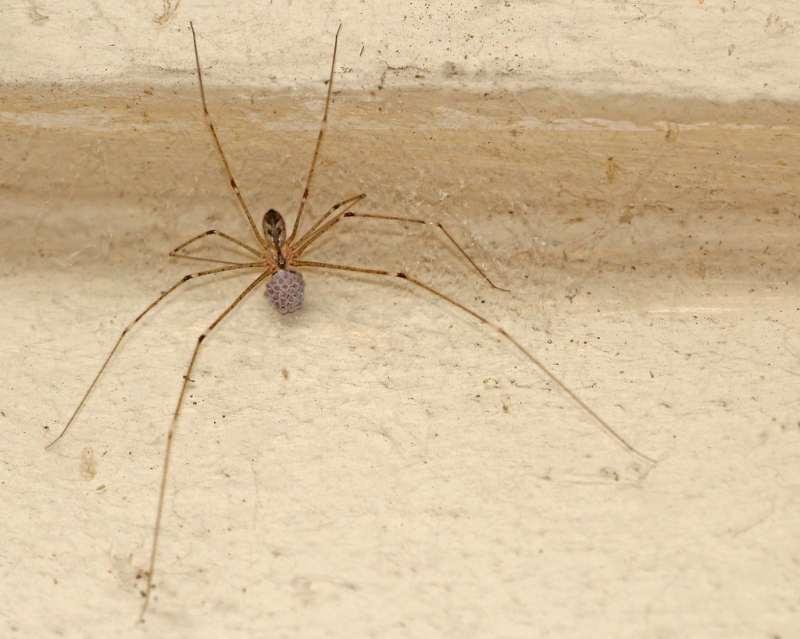
Flickr 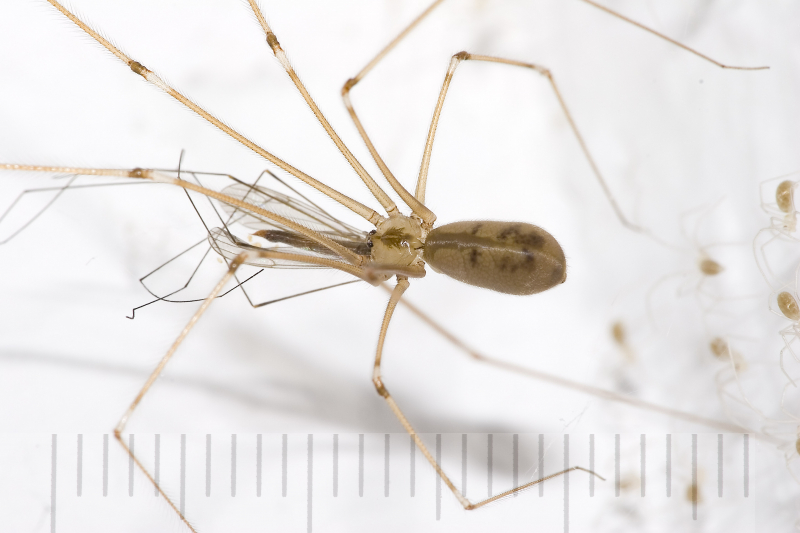
Wikipedia -
The American Nursery Web Spider (Pisaurina mira), is a member of the nursery web spider family Pisauridae. These spiders are widespread in the eastern half of North America, including Indiana. Due to their similar appearance, American nursery web spiders and wolf spiders are frequently confused by humans. Males are shorter than females, measuring only up to 19 millimeters long. Usually brown or brownish in color, they have abdomens that are almost twice as long as their carapaces. Their abdomen patterns might vary, but they often have a light band with two rows of dots or a light band with a dark central band.
Male American nursery web spiders frequently wrap the females' legs with silk to prevent being eaten because females frequently consume males. The females of nursery web spiders solely spin webs to hold their eggs, like other female spiders. Despite being venomous, its bite poses no hazard to humans.
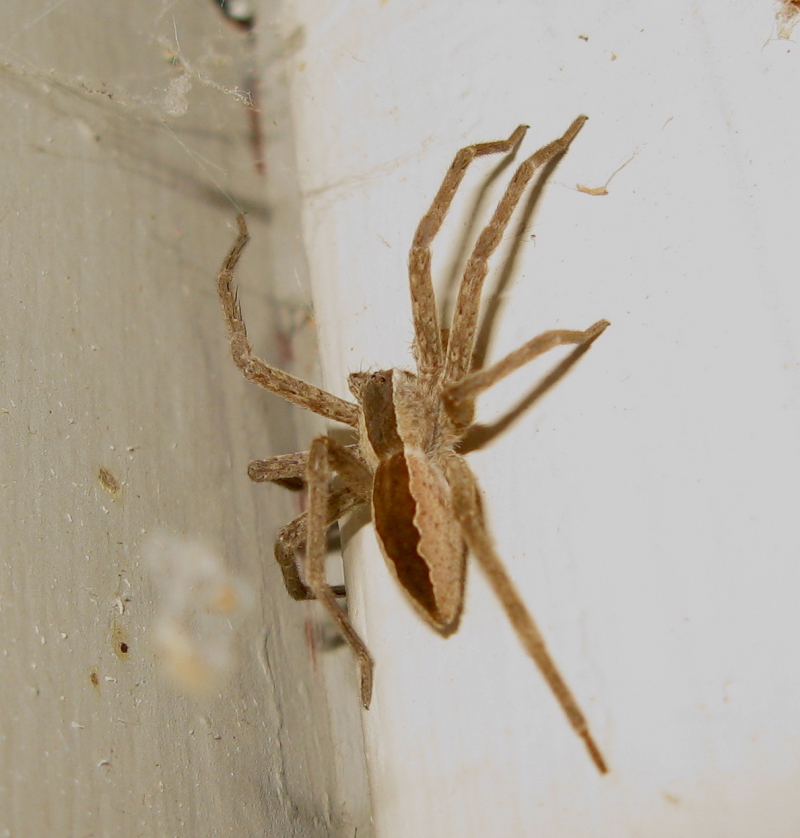
Wikipedia 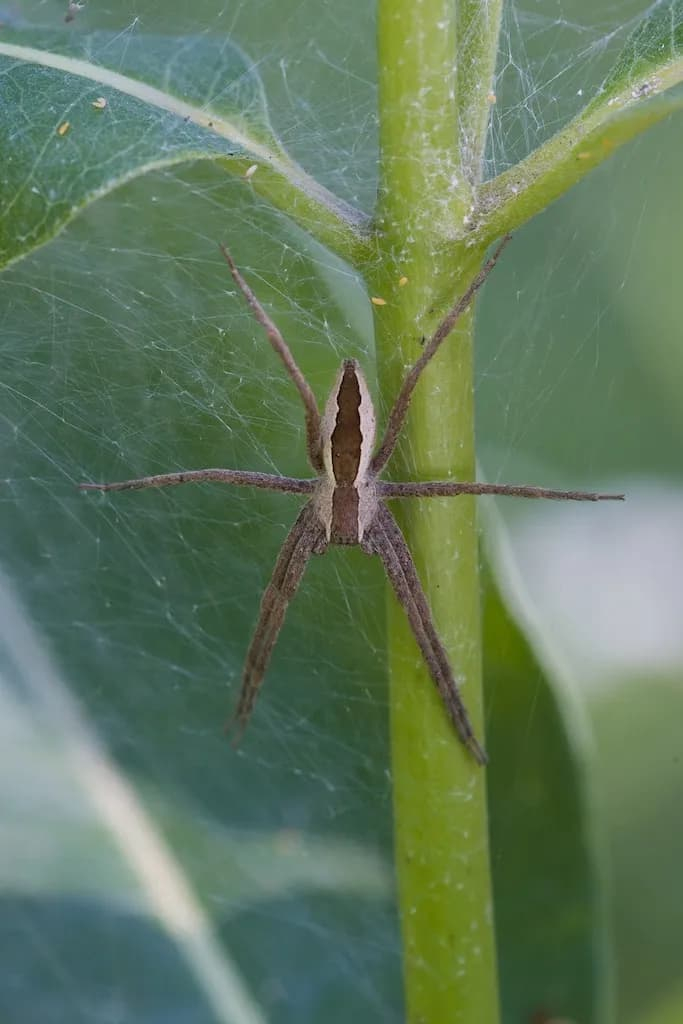
Guelph Arboretum - University of Guelph -
The Brown Recluse (Loxosceles reclusa), is one of the most dangerous spiders in Indiana. Its bite carries necrotic venom, which can result in vomiting, fever, nausea, and even death. Female brown recluses are often larger than males, reaching between 6 and 20 millimeters in length overall. Although they have a variety of appearances, most specimens have a bright, dark, or grey color to them. They are also known by the names fiddleback spider or violin spider because they often have a dark marking in the shape of a violin.
Brown recluses prefer to reside in dank, dark places like woodpiles, garages, and closets. They create asymmetrical webs, but they don't use them to capture prey. Instead, they go hunting at night after leaving their webs.
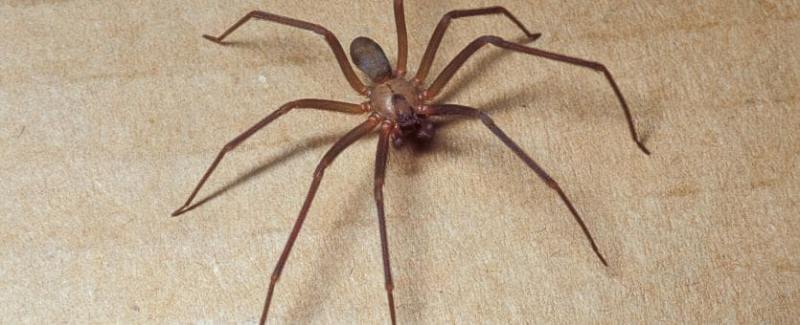
Missouri Department of Conservation 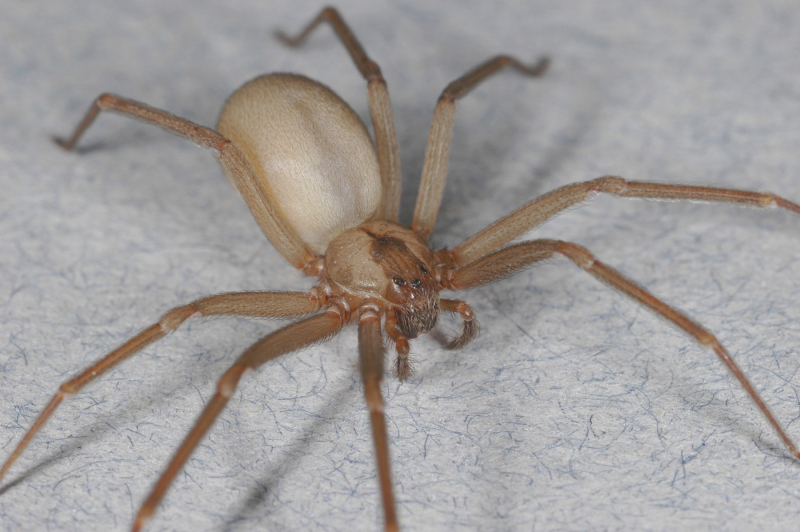
UC ANR -
The Star-Bellied Orb Weaver (Acanthepeira stellate), is a member of the orb weaver family Araneidae. These spiders can be found in Indiana despite normally being found on North American beaches. Males are slightly shorter than females, measuring 5 to 8 millimeters in length compared to 7 to 15 millimeters for females. They usually have a light or dark brown appearance, though the colors can vary greatly. Their unique abdomens, which have 10 to 12 points and resemble stars, are where they get their peculiar name.
They create webs in the form of wheels to ensnare prey, just like other orb weavers do. Usually, their webs are 6 to 10 inches broad. They rarely, if ever, display hostile behavior toward people, and their bite is not thought to pose any serious medical risks.
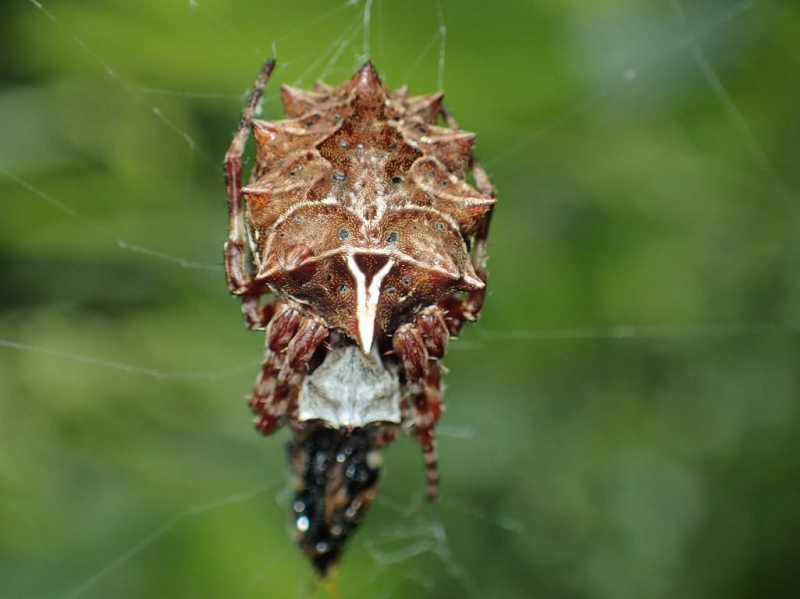
Spider Identifications 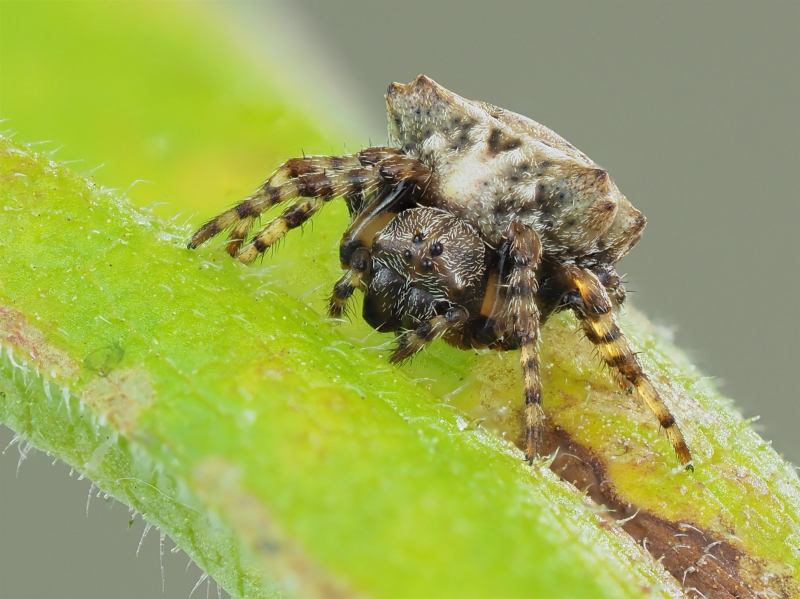
Spider ID -
The Tiger Wolf Spider (Tigrosa aspersa), is one of several wolf spiders found in Indiana. Because of its size and affinity for woody environments, it is also known as the woodland giant wolf spider. Even when compared to other species in their family, the Lycosidae, tiger wolf spiders are fairly huge as adults. Males are typically shorter than females, measuring just about 25 millimeters in length. The majority of females are black, while their abdomens can sometimes be dark grey. Males, in contrast, appear significantly lighter and range in color from light yellow to brown to beige.
Tiger wolf spiders do not use webs to capture food as other wolf spiders do. Instead, they stand in wait for unaware prey before overpowering their target with strength and speed. Despite their size, people are not thought to be threatened by their bite.
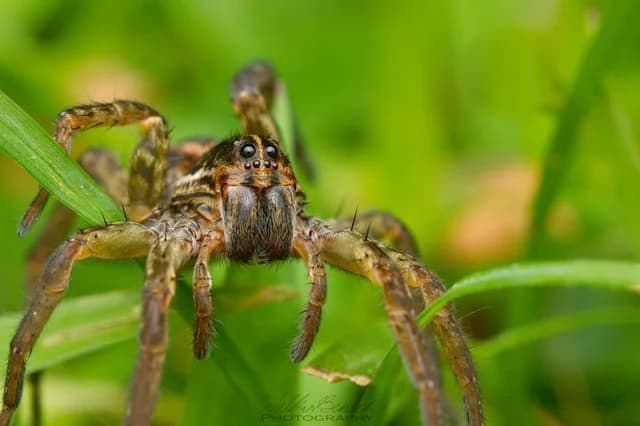
Reddit 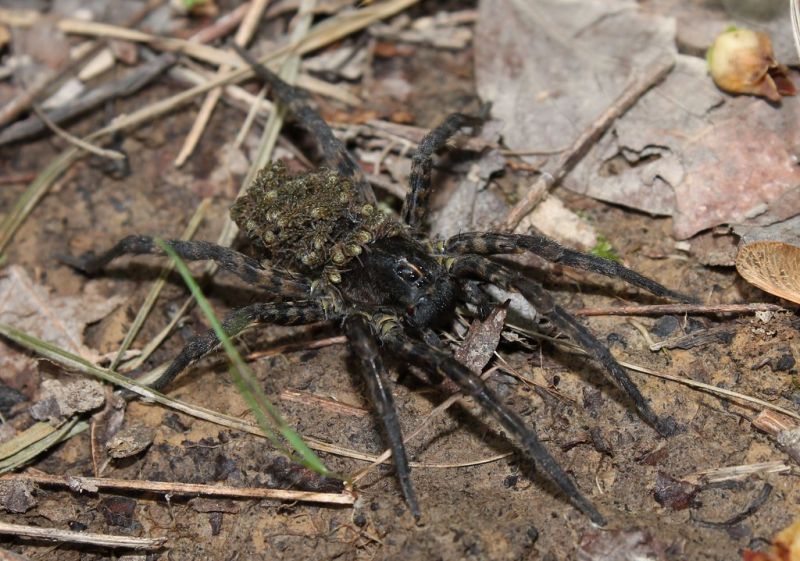
Flickr -
The White-Jawed Jumping Spider (Hentzia mitrata), belongs to the jumping spider family Salticidae. These spiders are common throughout much of the United States, Canada, and the Bahamas, including Indiana. Most white-jawed jumping spiders are only about 4 millimeters long, making them a relatively small species. Females are somewhat larger than males in size. Usually, their carapaces and abdomens have a light brown or copper color. They acquire their name from the long white hairs that coat their legs and chelicerae, or mouthparts.
They are swift and nimble hunters, just like other jumping spiders. They don't create webs to trap prey. Instead, they leap from a distance and ambush their target before striking them. Since their mouthparts are often too small to pierce human skin due to their small size, their bite is not hazardous to people.
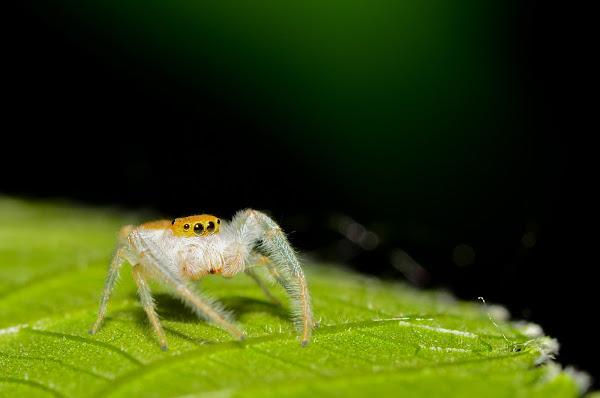
Project Noah 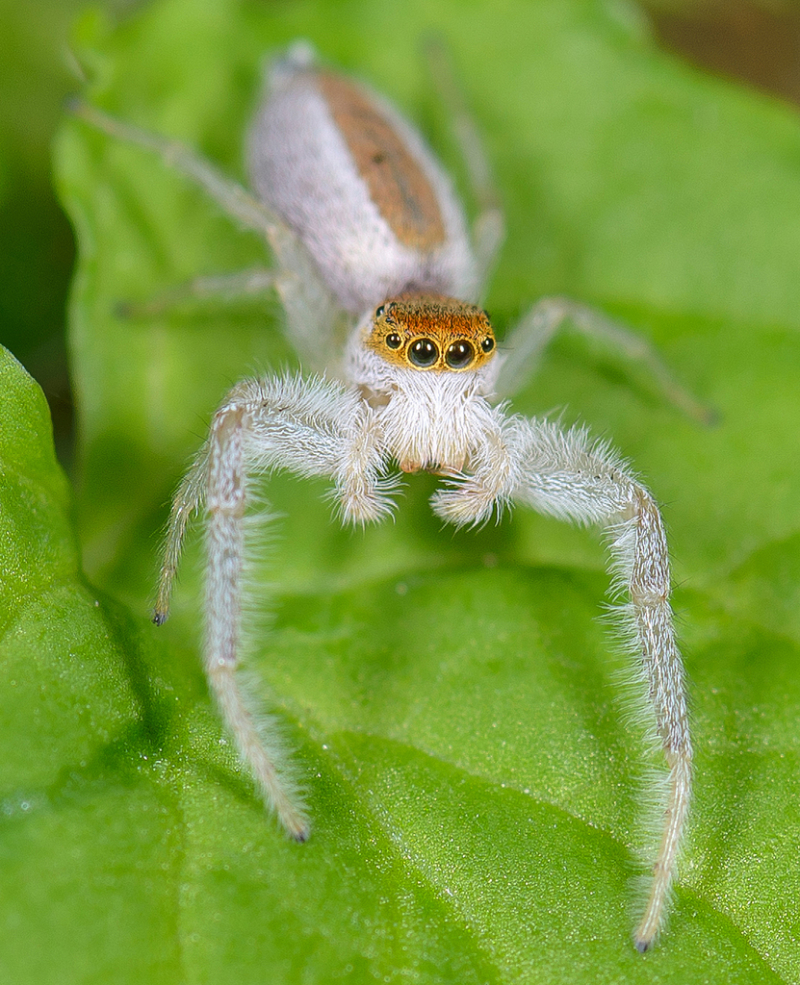
iNaturalist -
The Bridge Orb Weaver (Larinioides sclopetarius), is another member of the family Araneidae. It can be found outside of Indiana in the majority of the Great Lakes region states as well as Central Europe. Male bridge orb weavers are 8 to 9 millimeters long, while females range in length from 10 to 14 millimeters. Their legs have bands of tan and white, and they mostly have a grey appearance. They are also known by the name grey cross spider because of a striking light grey cross-shaped marking on their abdomens.
Bridge orb weavers, as its name suggests, typically construct their webs on man-made structures like bridges. Their huge, 2-foot diameter webs are frequently found on steel buildings that receive a lot of direct sunshine. Like other orb weavers, they rarely act aggressively toward humans and their bite is not medically significant.
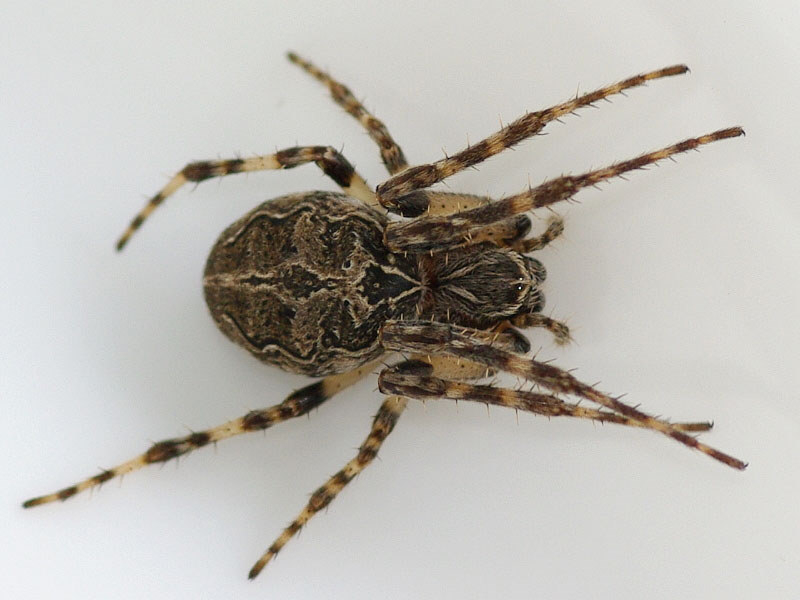
arthropodafotos.de 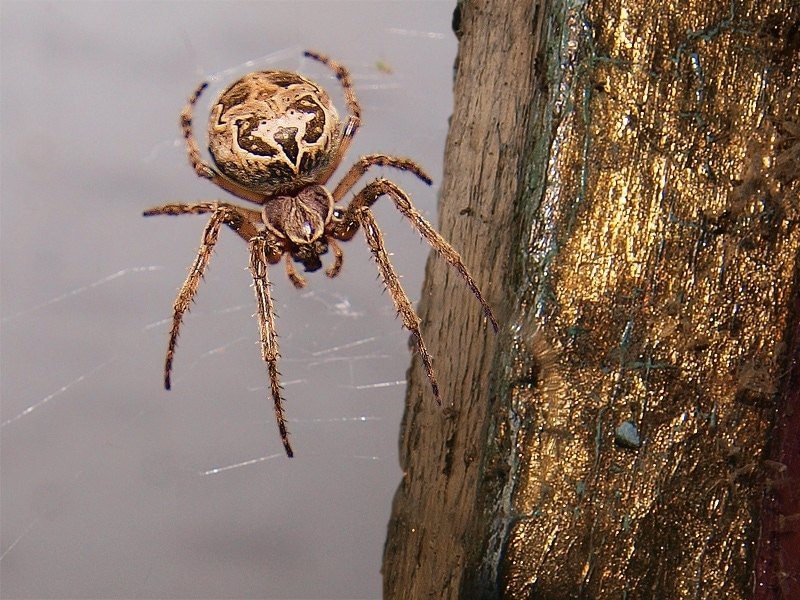
Spider ID -
The Six-Spotted Fishing Spider (Dolomedes triton), is a member of the nursery web spider family Pisauridae. These spiders are generally found in marshes in Indiana or other places with water. Males normally measure 9 to 13 millimeters in length, compared to females' average length of 15 to 20 millimeters. They have a white or cream stripe running down each side of their bodies and are either grey or brown in appearance. They acquire their name from the six dark spots on the bottom of their abdomens, which contrast with the tops of their abdomens, which are covered in light patches.
The six-spotted fishing spiders don't catch their prey in webs. Typically, they wait for prey to move within range while dangling their legs over the water. That said, they can also run across the surface of the water or even dive under its surface to catch insects or small fish.
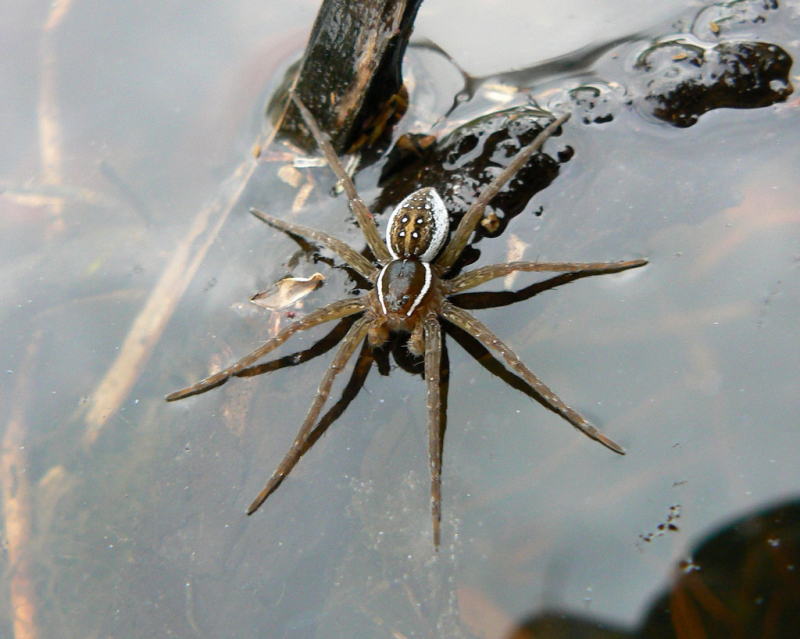
iNaturalist Canada 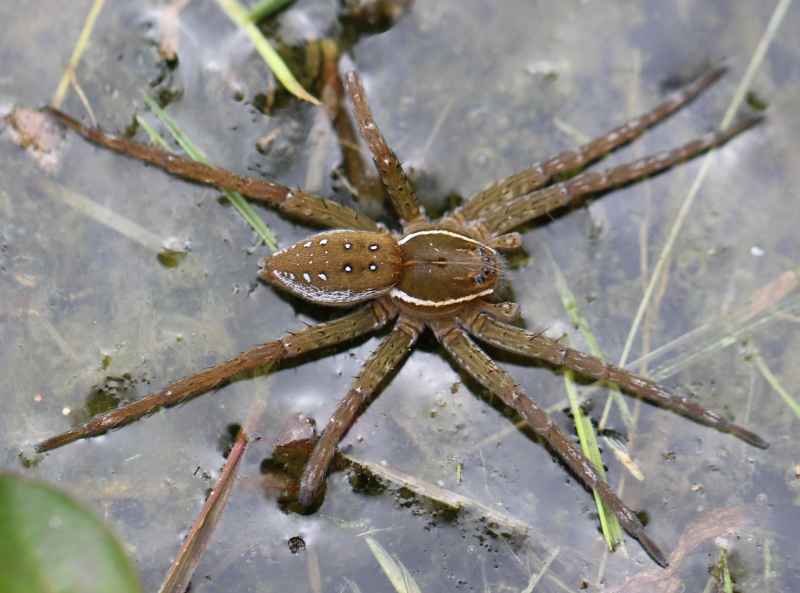
Maryland Biodiversity Project -
The Long-Legged Sac Spider (Cheiracanthuim mildei), is a member of the prowling spider family Miturgidae. Its lengthy legs and the tent-like silk shelter it constructs to ward off predators are both the sources of its name. Female long-legged sac spiders are typically larger than males, measuring between 5 and 9 millimeters in length. The color of their bodies is often pale yellow, white, green, or brown, with the abdomen being slightly paler than the cephalothorax.
Long-legged sac spiders catch their victims in ambushes. They can move quite swiftly, and they typically go out at night to find food. Despite not being fatal, their bite can be quite painful. As a result, if you come into contact with one, you are best off avoiding it.
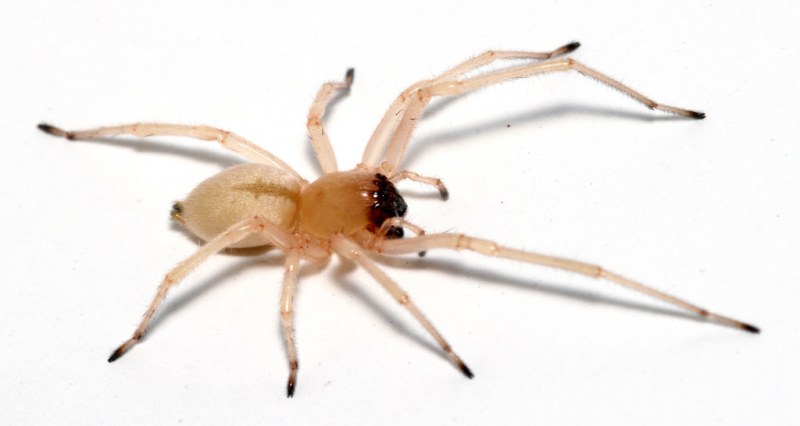
SpiderBytes 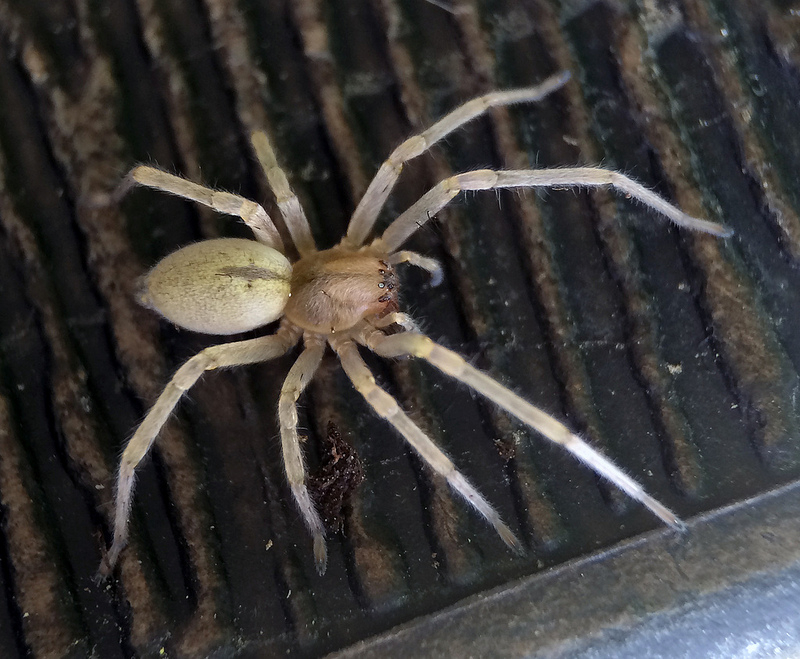
Ganshoren












